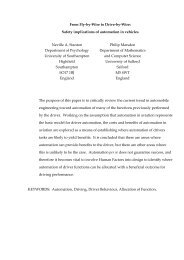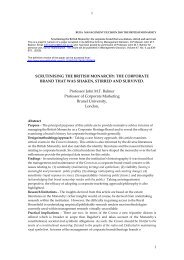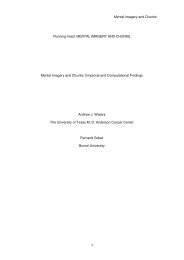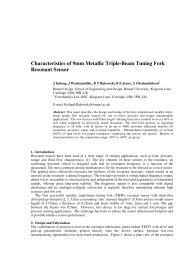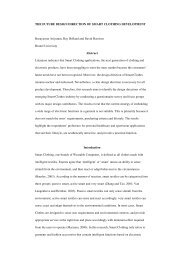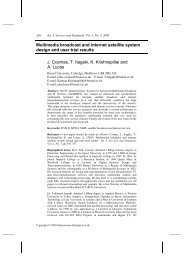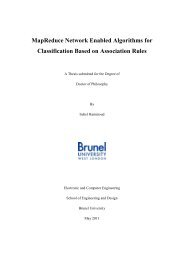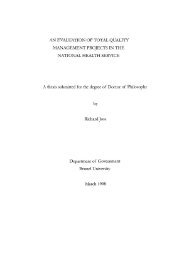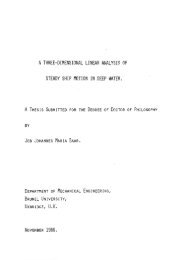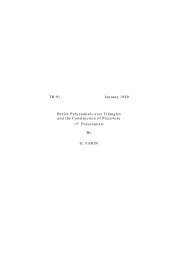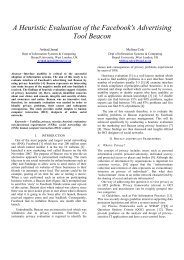Chapter 1 - Brunel University
Chapter 1 - Brunel University
Chapter 1 - Brunel University
You also want an ePaper? Increase the reach of your titles
YUMPU automatically turns print PDFs into web optimized ePapers that Google loves.
<strong>Chapter</strong> 2: Literature Review<br />
convenient ways for citizens and businesses to communicate with government in the<br />
acquisition of services (Kamal, 2008; Ebrahim et al., 2003; Melitski, 2003).<br />
Some countries have specified different names for e-government, e.g. in Hong<br />
Kong, Australia and India, it is termed ‗electronic service delivery‘, ‗government<br />
online‘, and ‗electronic government‘ respectively. Despite these numerous<br />
synonyms of the e-government terminology, it refers to the same connotation - that<br />
is seamless accessibility of government information and services through the web<br />
(Bose, 2004). The aforementioned theorised conceptions illustrate the provision of<br />
e-government service delivery, mainly focusing on citizens. Conversely, literature<br />
also highlights similar provision of services to customers through the use of e -<br />
commerce technological solutions (Al-Shehry et al., 2006). Moreover, Carter and<br />
Belanger (2004b) and Al-Shehry et al., (2006) argue that both e-government and e-<br />
commerce are based on Internet technology that is designed to facilitate the<br />
exchange of goods, services, and information between several stakeholders.<br />
Tassabehji and Elliman, (2006) and Al-Shehry et al., (2006), further emphasize that<br />
e-government systems share similar characteristics with the field of e-commerce and<br />
e-business in terms of the use and implementation of the internet; thus generating<br />
new services, products and channels to be available to end-users. Eyob, (2004) also<br />
observes that e-government has become another wave of ICT applications in the<br />
public sector, as e-business and e-commerce disciplines mature in the private sector.<br />
2.3 A Taxonomy of E-government Definitions<br />
E-government has been defined and conceptualised in different ways in normative<br />
literature. Some definitions view e-government from a narrow perspective of<br />
exploiting the accessibility of ICT and the Internet to improve the efficiency of<br />
government systems. Others view it from a broader perspective - that of a system of<br />
reform and government process reengineering. Nevertheless, despite several<br />
conceptions, the definition of e-government remains vague and a concept of some<br />
debate among the various e-government scholars. Al-Sebie and Irani, (2005) support<br />
this argument and state that there is no specific definition for the e -government<br />
concept among practitioners and public administration. Various researchers have<br />
offered different definitions to explain the concept of e-government (e.g. the<br />
European Union, 2004; Heeks, 2003; Seifert and Petersen, 2002; Jain, 2002). These<br />
definitions differ according to varying e-government foci and are usually centred on<br />
technology, business, citizen, government, process, or a functional perspective<br />
(Weerakkody and Dhillon, 2008; Irani et al., 2006; Seifert and Petersen, 2002). Irani<br />
Shafi Al-Shafi 17



